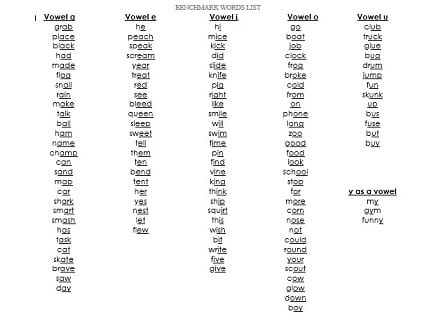by C. Elkins, OK Math and Reading Lady
I have been a fan of using a word-analogy strategy to help students decode words for a long time. Actually ever since I saw a video and read more about Irene Gaskins Benchmark Word approach years ago. She even had a school in which she practiced this approach. Word analogy is the process of using a known word to apply to a new word. Think of it as being a word detective. Sometimes word families are envoked, but more often similar vowel patterns are analyzed.
Here are ways I have used it recently with students:
- A first grade student came to the word far in a sentence. He stopped and didn’t try anything. There was no picture. Skipping the word and reading on would not have helped in this case. I wrote this word “are” on a small whiteboard (knowing the child knew this common sight word). I asked: “What is this word?” Child responded correctly with “are.” I underlined the are in the word and said, “Use this part of the word to help you.” The child could immediately and correctly respond with “far.”
- A fifth grade student came to the word wren in a sentence. She did not recognize the word, and again there was no picture, even though from the context she could tell it was a type of bird. I wrote the word “write” on the board, suspecting she knew it. She did, immediately. So I underlined the wr and said, “Use this part of write to help you with this word you don’t know.” She quickly surmised it was wren.
- A second grade student came to the word termite in a sentence and stopped. I had the student cover up the ending (mite) to expose ter. Still nothing. So I wrote “her” on a small whiteboard I always keep handy with my teacher materials. She knew it quickly. Then I told her to apply that “er” part to the tricky word. She was able to quickly say “ter” and then used the picture to confirm the correct word was “termite.”
These are specific examples to help children realize they can apply something from a known word to a new word. . . . without the teacher giving a mini lesson on vowel sounds, decoding rules, tricky r’s, sounding out letter by letter, etc. It’s very helpful when dealing with whole words or word parts. This is exactly what we want students to be able to do on their own as they make their reading journey.
Here is an article from the University of Illinois about the methodology: Look closely at pages 9-11 for application in the class. Here is an excerpt regarding decoding the word “momentum” in this sentence: “The falling object gained momentum as it fell.” Students use the key known words go, ten, and drum to relate to the syllables in the unknown word. Get the article here: A Metacognitive Approach: Using what you know to decode words you don’t know
The typed word analogy chart pictured below is a handy reference. I keep a copy (in a plastic sleeve) close by to pull out when needed. I point to a known word on the list and then help the student use that to help with a new word. When I don’t have the chart close by, I write a word I feel is known on a little white board, show it to the student, then show how to apply it (as in examples above). Here’s a FREE copy of the chart (word document): Benchmark word analogy list

I have also presented this small chart as a larger version on a poster board for all students to reference in the classroom. It’s a different version of a word wall.
Give it a try, and let us know what you think!